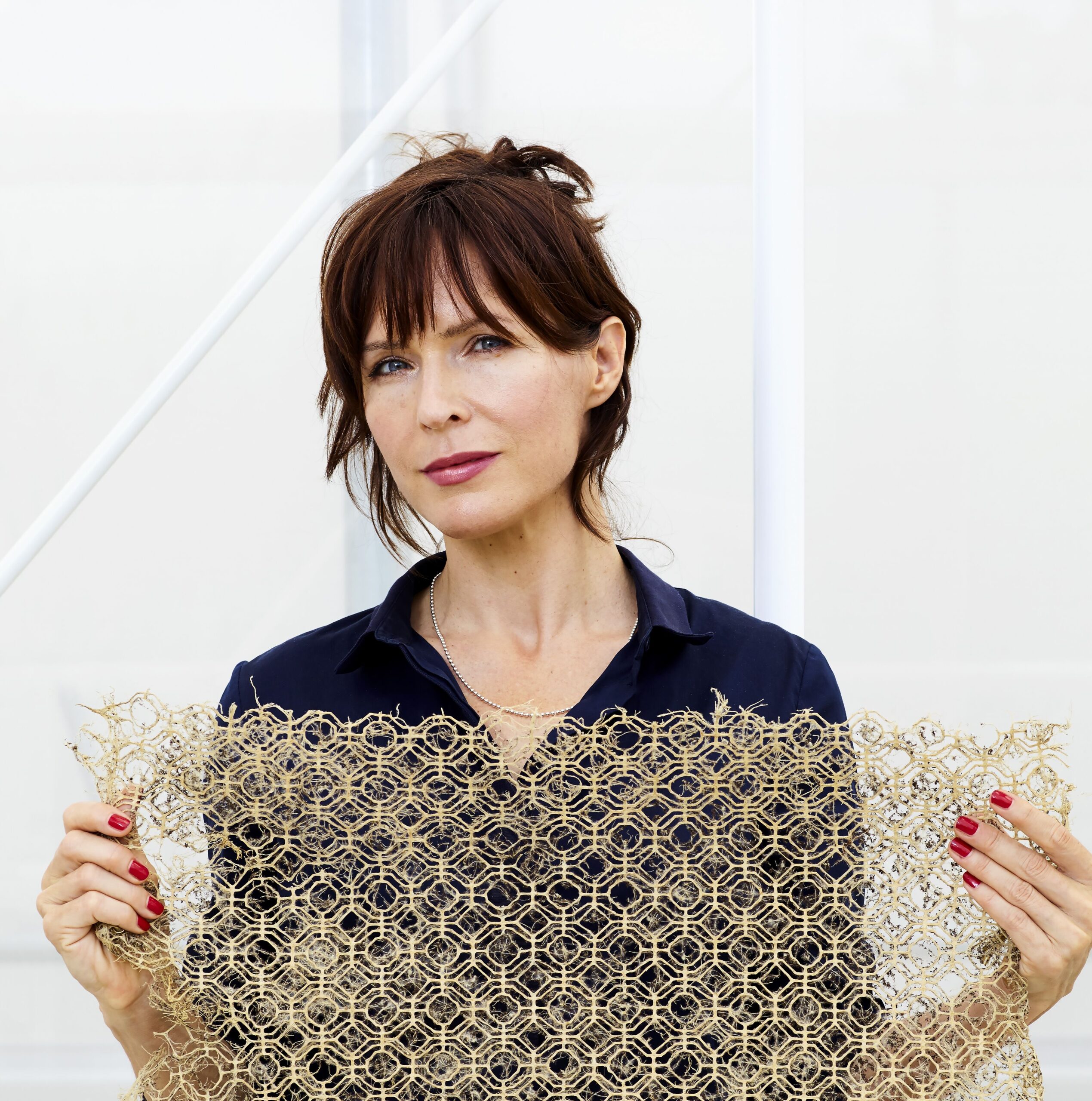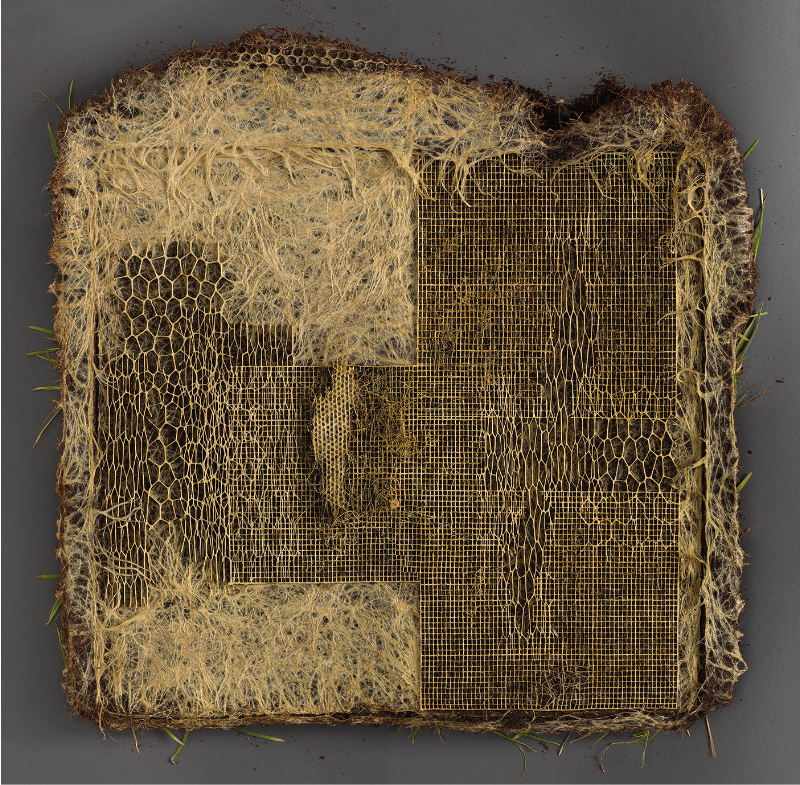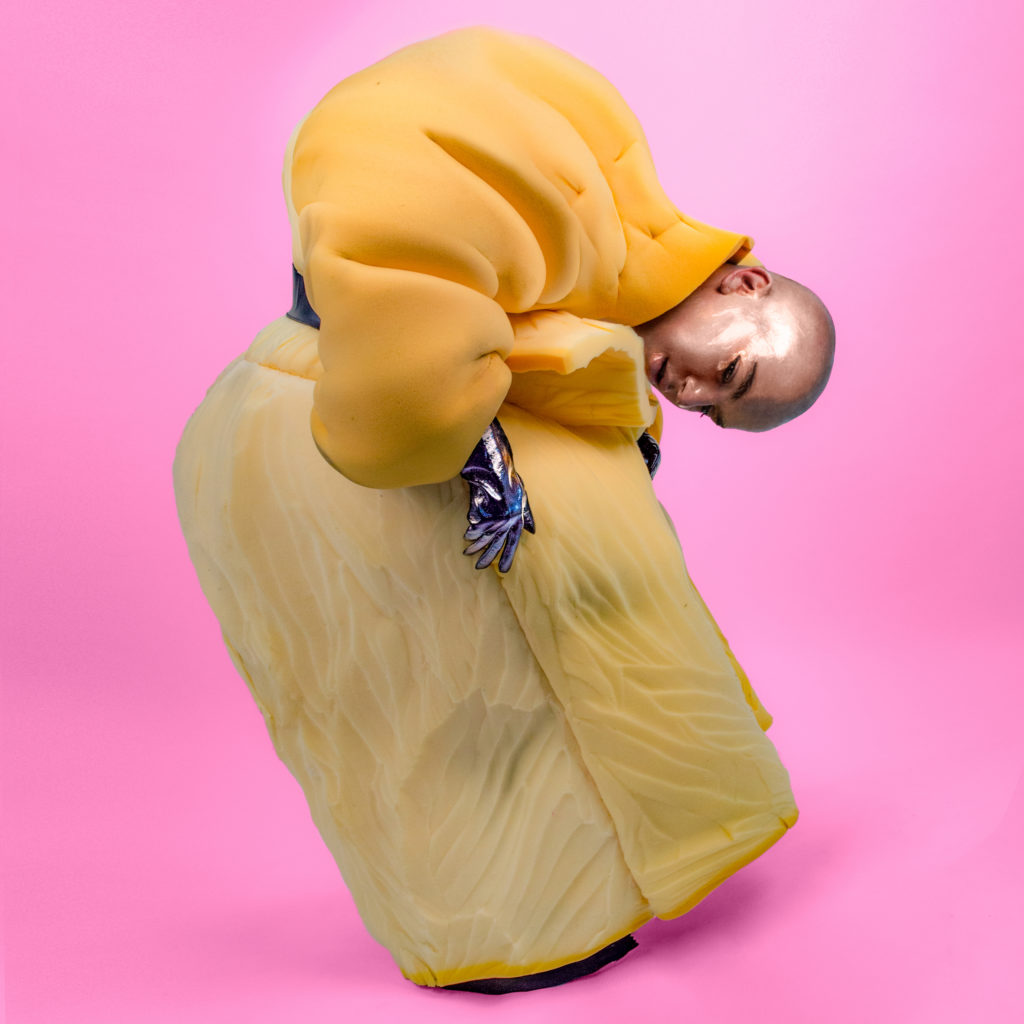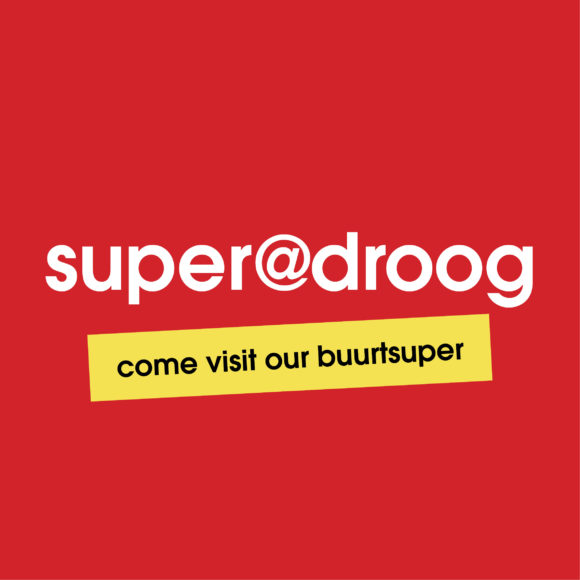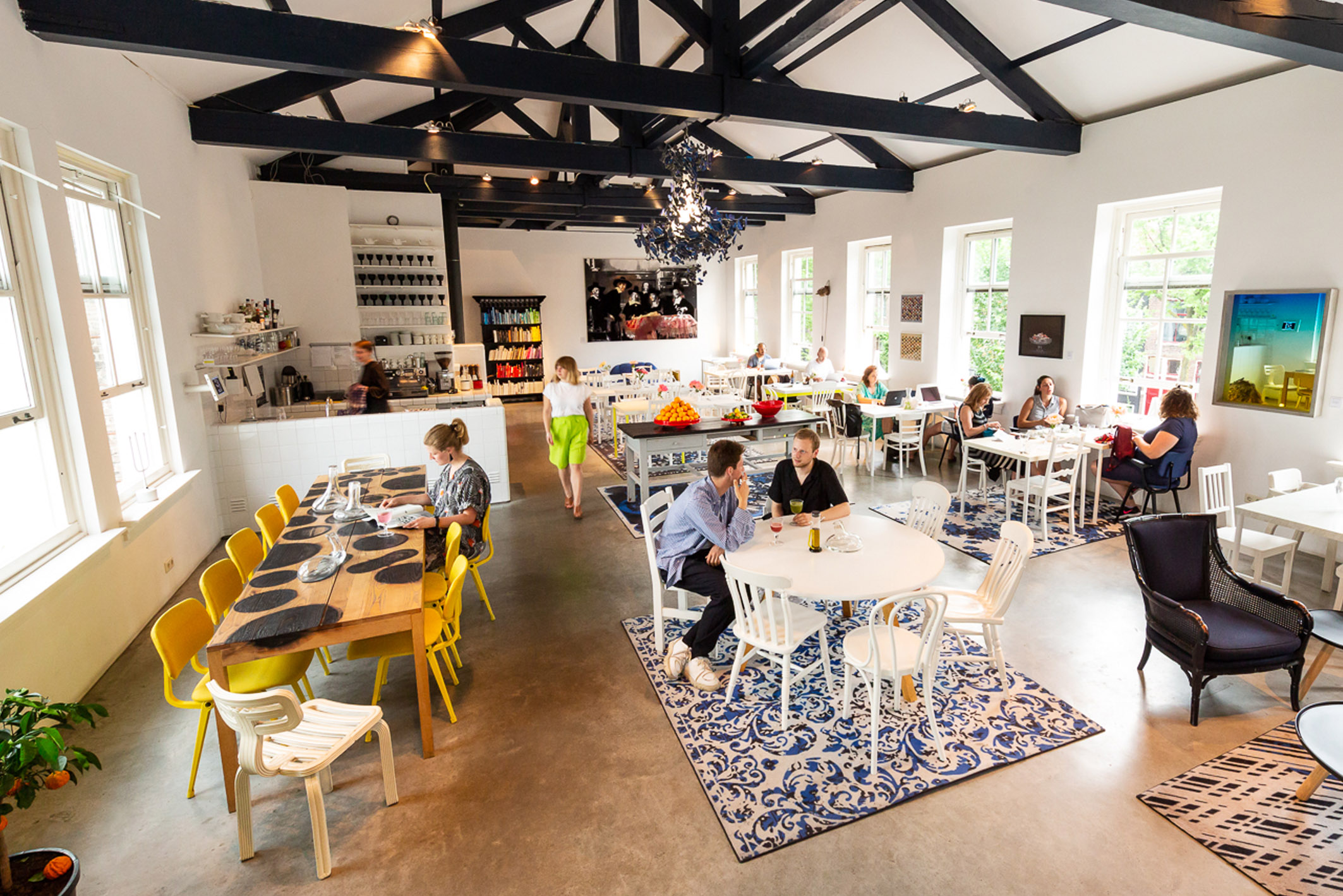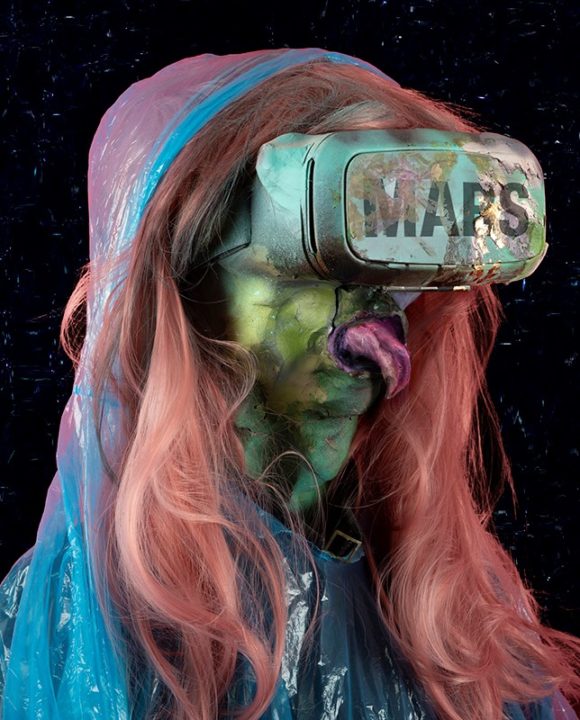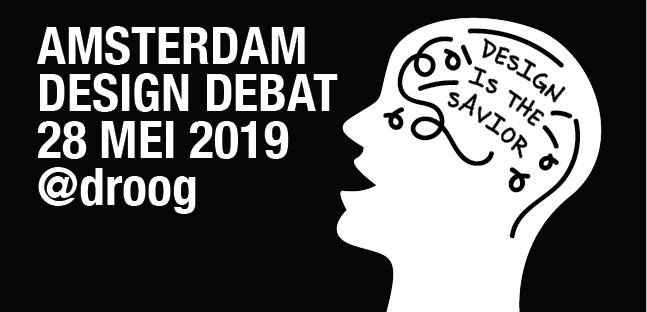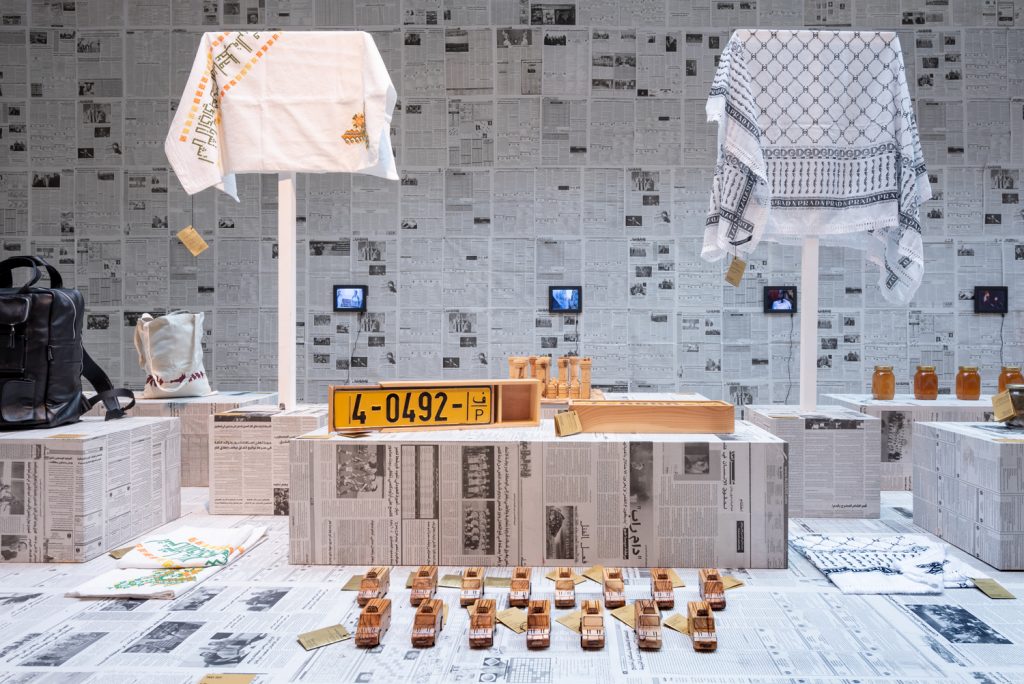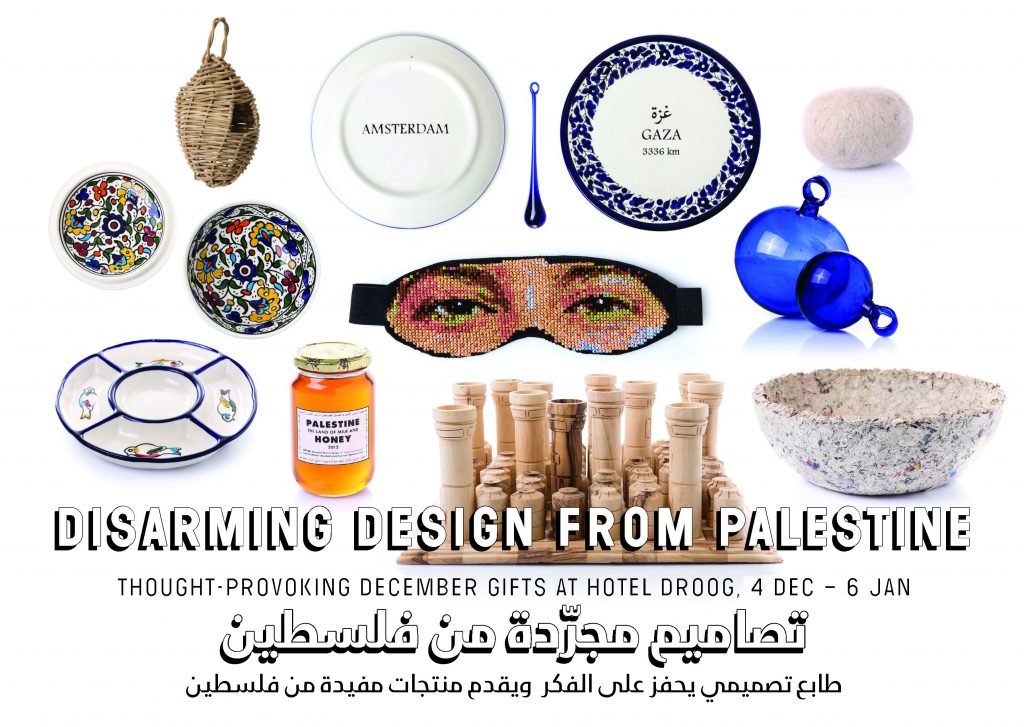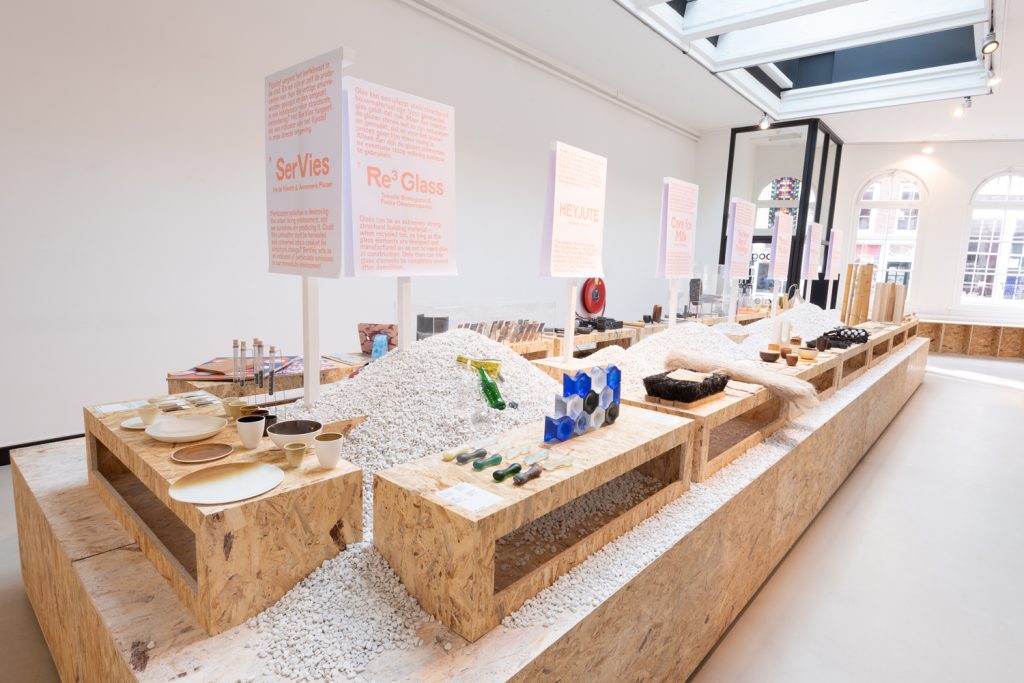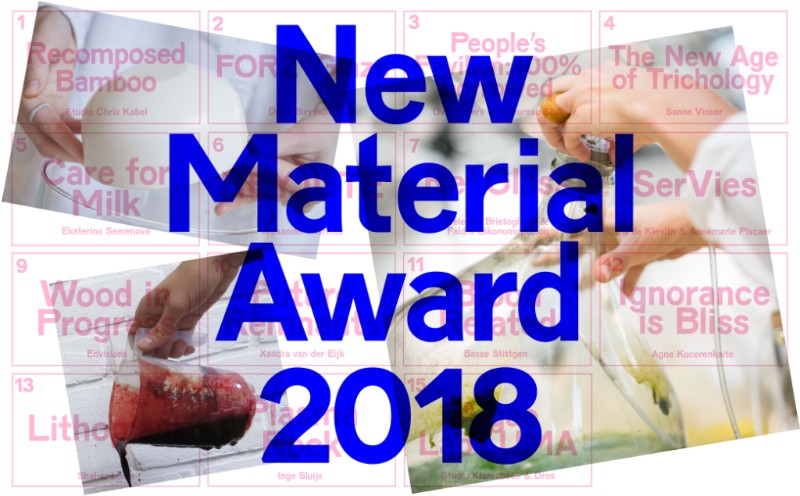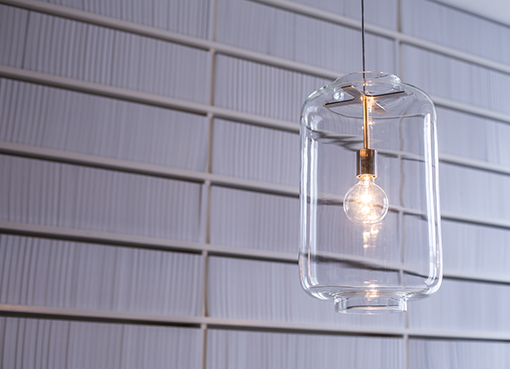27/2: Exclusive perfomance and artist talk by Diana Scherer
The sowing season is on at Droog. If you have not noticed yet, since a few weeks grass is growing on our gallery floor. This grass will be moved in a performance called Harvest on Thursday the 27th of February. After the performance, Diana Scherer will give an an exclusive artist talk in de gallery of Droog.
Programme
16:30 Doors open
17:00 Performance Harvest
17:30 Break
17:45 Artist Talk by Diana Scherer
19:00 End
In the solo exhibition Hyper Rhizome Diana Scherer presents thirteen new works. Interweaving Scherer’s ongoing study of plant root systems, this exhibition presents a layered examination of how biological material can be transformed into sustainable textile. From a root-bound maxi dress to a knotted radicle tapestry, the exhibition explores the human-nature relationship and our compulsion to control our natural environment.
ABOUT DIANA SCHERER
Diana Scherer is a visual artist living and working in Amsterdam. She was born in Lauingen in Germany and studied fine art at the Rietveld Academy in Amsterdam. Her practice encompasses photography, material research, plant-root weaving and sculpture. Her works have been exhibited in several international solo and group shows. Recent examples include Earth Matters at the Textile Museum Tilburg (2017); the Tasis 2019 Art & Science exhibition at the National Museum of China in Beijing, Spring Tide at the Nederlands Fotomuseum in Rotterdam (2017); and A Queen Within – Adorned Archetypes at the New Orleans Museum of Art (2018). Her work Rootbound # 2, a dress grown from plant roots, is currently featured in the exhibition Fashioned from Nature at the Victoria & Albert Museum in London and Shenzhen. She received Rotterdam-based Het Nieuwe Instituut’s 2016 New Material Fellow for her work Interwoven.

